Icebreakers are special vessels designed and built to operate in areas with thick ice.
How Icebreakers Work
Icebreakers are specifically designed ships that break ice and navigate through frozen oceans or rivers. Their operational principle involves using the weight of the hull to press down on the ice, cutting and dispersing it through the ship’s structure, thus opening a channel and ensuring smooth passage.
The design of the icebreaker hull is crucial. Typically, steel structures are employed, with the bottom and sides reinforced and thickened to increase the weight of the hull. The hull of an icebreaker is usually streamlined or bulbous, a shape that helps reduce the ice resistance acting on the hull and effectively pushes the ice away from both sides.
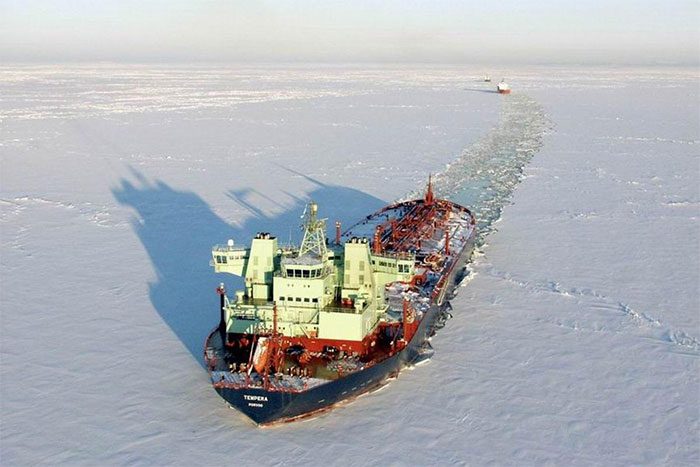
As a vessel moves over frozen waters, the weight of the hull causes the bottom of the ship to press directly onto the ice surface due to gravitational force. The heavy weight of the hull can create significant pressure, sufficient to break the ice. (Image: ZME)
Icebreakers utilize a special structure along the sides to cut and disperse ice. The sidewalls are often beveled to form a blade-like shape. As the ship moves, the sides slice the ice into smaller pieces and throw them aside. Some icebreakers are even equipped with rotating blades or serrated edges to further enhance their ice-cutting and dispersing capabilities.
In addition to the hull design and side structures, icebreakers must also implement corresponding operational strategies based on ice conditions. When encountering thicker and larger ice layers, icebreakers may need to use auxiliary tools such as ice hammers or explosive devices to enhance their ice-breaking efficiency. During ice-breaking operations, icebreakers must always adjust their speed and direction to avoid damaging the hull and prevent excessive stress on the engine.
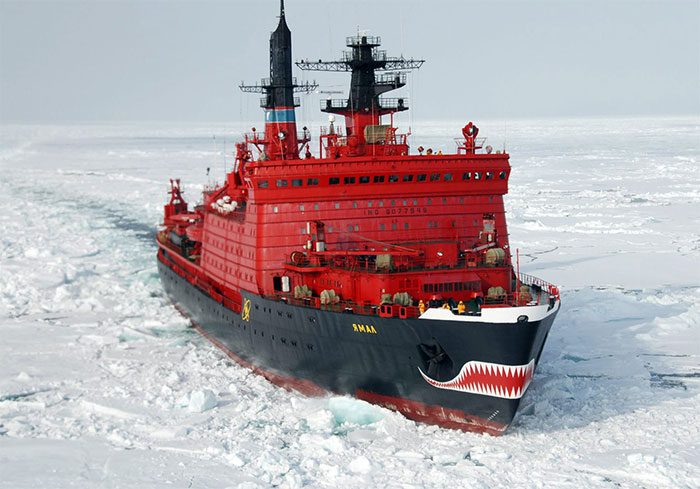
Icebreakers use the weight of their hulls to press down, cut, and disperse ice through their side structures to open channels. This operational principle allows icebreakers to navigate smoothly through frozen oceans or rivers, ensuring safe passage for vessels. (Image: Cool Antarctica).
Design Features of Icebreakers
Due to the design characteristics of the hull shape and powerful propulsion systems, icebreakers can effectively break through ice, facilitating the movement of other vessels and playing a crucial role in maritime engineering.
The shape of the icebreaker hull is one of its key design elements. Icebreaker hulls are often arc-shaped or V-shaped at the bottom, allowing for greater pressure and impact force on the ice during movement. This shape enables icebreakers to break the ice layer and push it to the sides, allowing the vessel to move forward freely. The hulls are typically wider and sturdier to enhance the ice resistance, preventing damage from ice and ensuring safe navigation.
A powerful energy system is also an essential design feature of icebreakers. The ice resistance and the pressure it exerts on the hull can be substantial, so icebreakers require significant power to propel the hull forward and penetrate the ice layer. They are equipped with multiple powerful diesel engines to provide adequate energy.
These engines can typically generate hundreds of thousands of horsepower, enabling icebreakers to navigate through ice at high speeds. The electric system of icebreakers usually includes multiple thrusters and propellers to enhance the vessel’s maneuverability and help it adapt to various ice conditions.
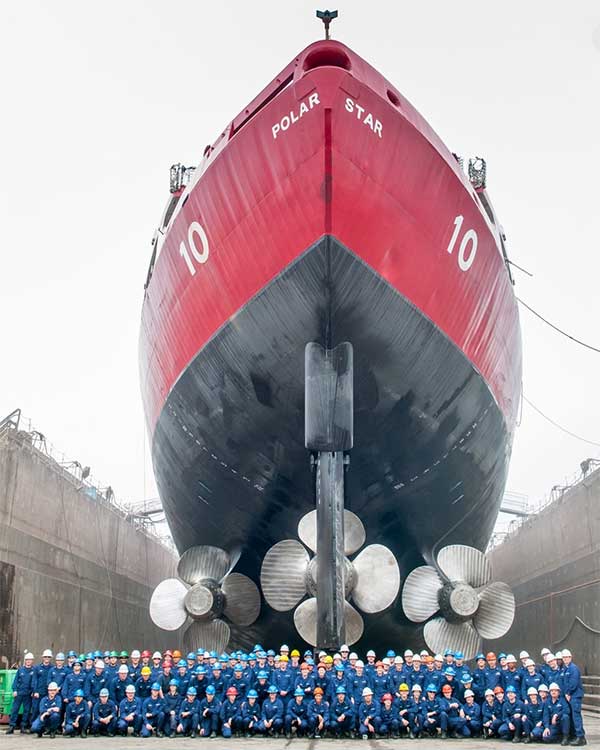
The design features of icebreakers include a streamlined hull shape and effective implementation of a powerful energy system. These design characteristics allow icebreakers to operate in icy waters, clearing paths for other vessels and ensuring smooth maritime transportation. With advancements in science and technology and the development of maritime engineering, icebreaker designs continue to evolve and improve, providing safer and more efficient maritime transport solutions. (Image: USNI).
To operate in harsh icy environments, icebreakers require greater hull weight to exert sufficient downward force to penetrate the ice. There are various methods to increase a vessel’s weight, such as using thicker hull structures, installing heavy equipment, and anti-icing devices. These measures can enhance the stability and pressure resistance of the vessel, ensuring that the icebreaker can navigate freely in challenging ice conditions.
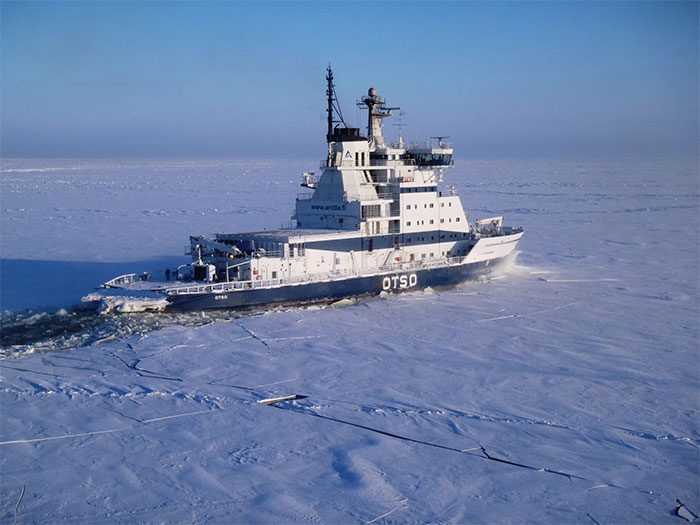
The pointed bow design is another crucial technology that equips icebreakers to handle thick ice layers. Unlike traditional ships, the bow of an icebreaker typically features a serrated shape or sharp cutting edges. Such designs effectively reduce the thickness of the ice and cut or push it away. A pointed bow can quickly withstand ice resistance and reduce the vessel’s drag, thereby minimizing energy consumption and loss. (Image: ZME).
Increasing the weight of the ship is not limited to altering the hull structure but can also involve increasing the vessel’s cargo capacity. Most icebreakers have strong transport and loading capabilities. By increasing cargo capacity and adding weight at the bottom of the hull, the ship can better withstand external pressures in the ice.
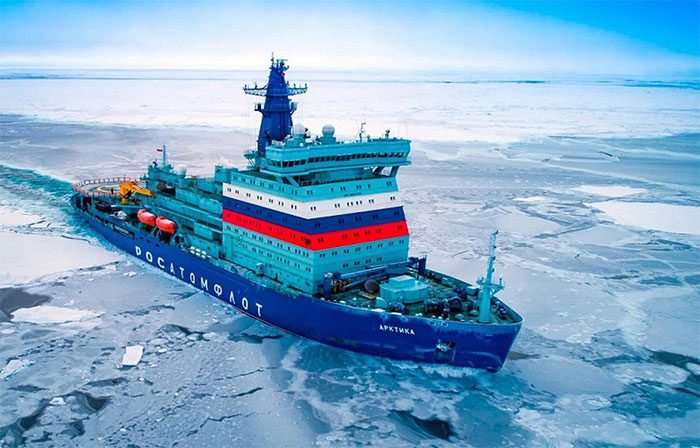
The pointed bow design often combines with the hull weight to create powerful ice-breaking capabilities. When the pressure exerted on the ice is sufficiently high, the ice will either break or be cut, allowing the vessel to move forward through thick ice. Meanwhile, icebreakers are typically equipped with propulsion engines to help the vessel withstand ice resistance and further enhance its ice-breaking abilities. (Image: Zhihu).
In the future, with advancements in science and technology and continuous improvements in technology, the ice-breaking capabilities of icebreakers will be further enhanced, providing better protection for transportation in extreme cold regions. Progress in icebreaker research and technology applications will significantly promote the development of cold regions and the exploration and utilization of resources.





















































